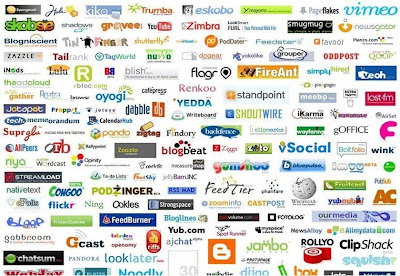We are currently living through a new revolution – one that is driven by user-generated information as you can see by the plethora of Web 2.0 sites up in the following image. We’re talking about people engaging with each other’s content and improving the quality of collective knowledge about everything.
Informational and interactional connectivity is resulting in exponential increases in the speed at which ideas and behaviours are spreading, particularly through an age demographic, which is no longer confined to the 16 to 25's. Month on month we see the age demographics of social interaction expand as ecommerce takes hold and social networks increase their reach. Facebook’s user-base for example has already shifted from people in their 20’s up to 35 year olds as defacto within the last year alone, with parents and grandparents also now creating profiles. The tipping points for each age group and regional audience are being reached ever more quickly and the web is no longer just about the Millennial and Gen X demographics, but extends well into the Baby Boomers and beyond.
The overall size of penetration is soaring too. Universal McCann research shows that the UK alone has 17m active internet users, 1m of which have shared an opinion within their trusted networks about one or more of your products and brands. Trusted opinions are shown to be the top influence in consumers decision making process. Do you know what they’re saying about you? If you think this doesn’t apply to you, just go onto Google and type in your company’s name and complaints and reviews.
People of all ages are collaborating to avoid being exploited by corporations; socialising to ensure they get the best deals; and looking for brand and personal associations that provide the most social kudos.
Where brands get it right, the pay-offs are massive.
Addressing this revolution in social consumer behaviour is about developing 2-way engagement, primarily by maximising the reach of your engagement channels, by which I mean any channels through which you can interact with your customers in real time... A good example being your web presence.
The need for maximising the impact of your digital channel is reinforced by the fact that since competition in the digital space is non-local, rapidly expanding, and thus much greater than in the physical space; firms that are not part of the social conversation will struggle to compete as more people go online to beat the impact of the credit crunch.
The same applies for firms that are not leveraging their digital channels to learn how to improve their cross-channel experiences. Getting real-time feedback on how shoppers' expectations measure up against experience, through participating in social online conversation is one of the most valuable insights any company can get.
In short... by leveraging social media and the web!





